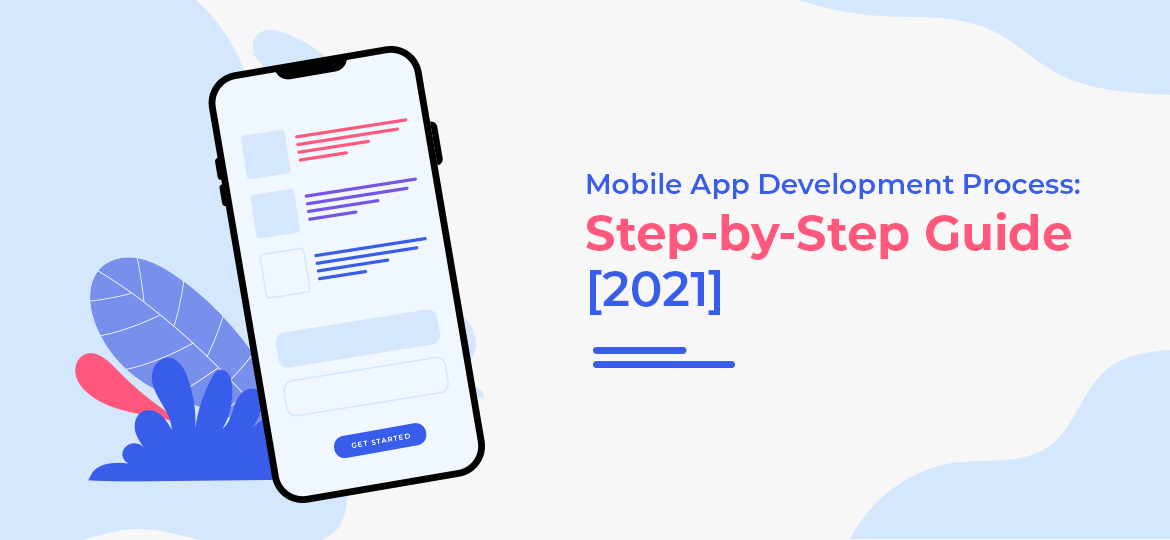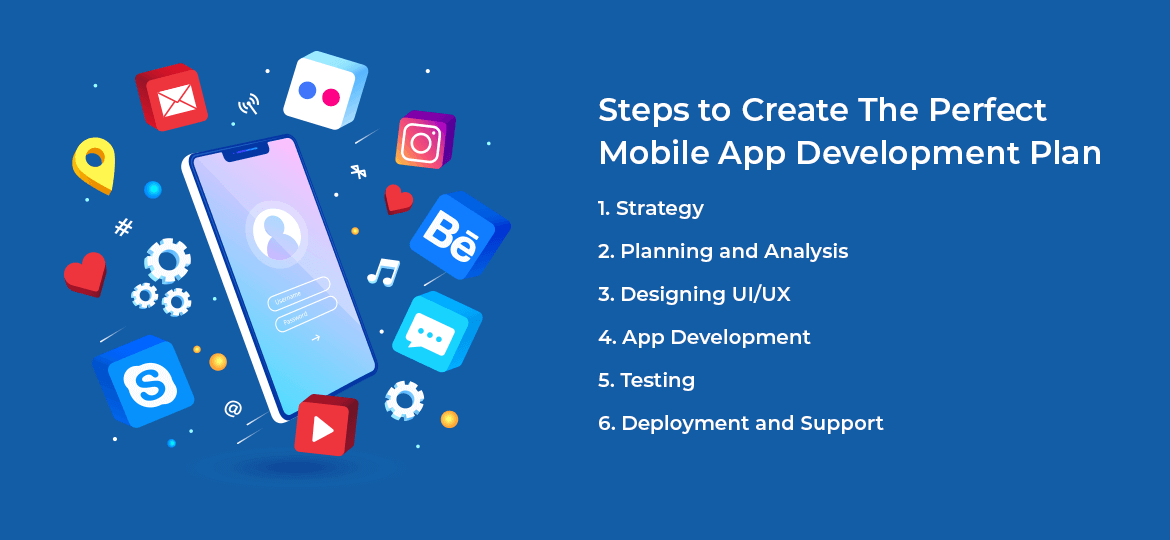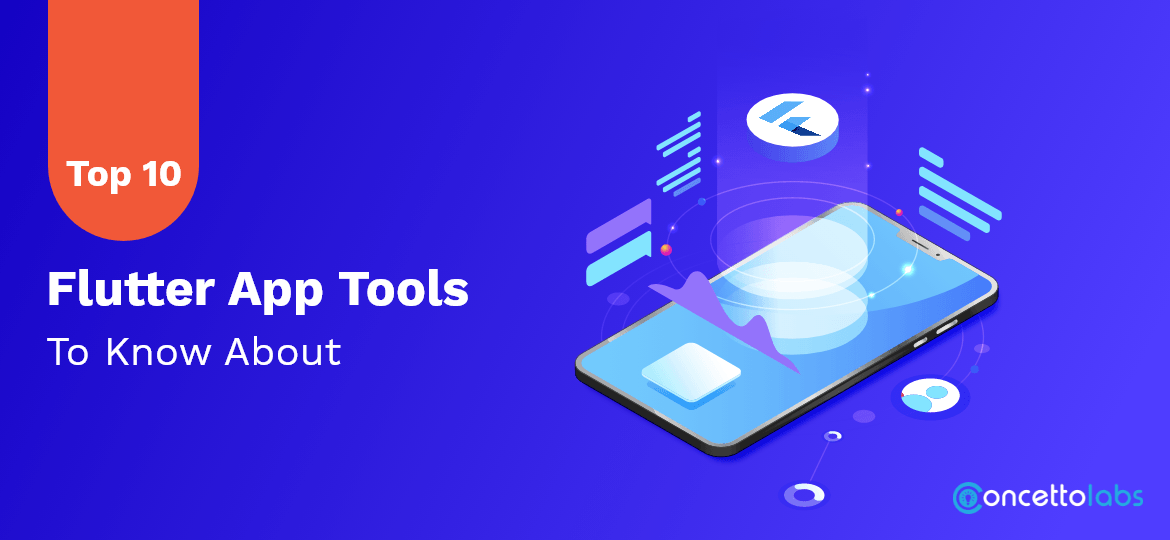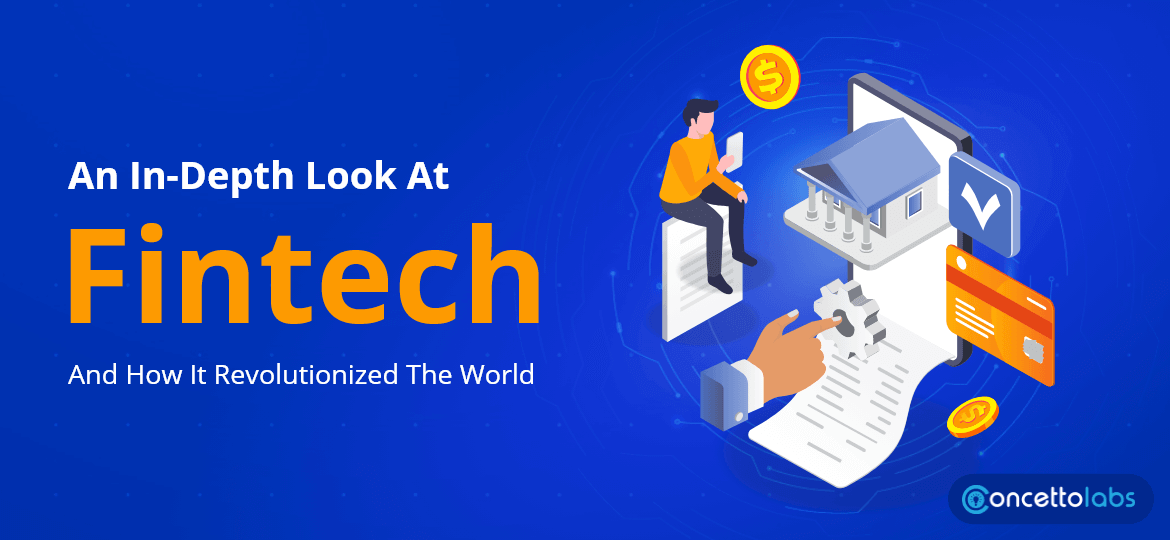
In 2021, mobile apps have been predicted to rake in $693 billion worth of revenues from application stores as well as in-app advertising. To add to this, enterprise mobility is also projected to reach a worth of $510.39 billion in 2022. A stellar mobile app development process is distributed over six primary phases. In this blog, let’s take an in-depth look at all of them.
Regardless of the size of the app development project, creating a development process with our step-by-step guide will help you immensely.
Why is it Important to Have Guidelines?
Often, we focus too much on the end goal and not the process. Creating guidelines for your mobile app project will help in having a game plan to approach each step with calculated decisions. This will help you overcome any roadblocks, reassess your steps or retrace the app development journey in case there is troubleshooting required.
Steps to Create The Perfect Mobile App Development Process Plan

1. Strategy
The first stage of any mobile app development process requires creating a strategy to transform your design into a sale-worthy app. You can involve a more vital aspect of this in your complete organizational mobility strategy. As your app’s goals may differ from the others, there is a need for an app-centric approach to be addressed during the application development process.
In this stage, you need to:
- Identify your users
- Research your competition
- Establish your app’s aim and intentions
- Choose a platform for your app
2. Planning and Analysis
In the planning stage, your idea starts to take form and becomes an actual project. Planning and analysis start with establishing use cases and finding detailed functional necessities.
Once you identify the needs of your app, create a development roadmap. This consists of prioritizing your mobile app functionalities and arranging them into achievable milestones. If resources, time, or costs are a significant concern, you need to define the minimum viable product (MVP) and focus on it for your app’s initial deployment.
A phase of the planning process entails identifying the essential skills required for the app development journey. If your aim is to create a mobile app for iOS and Android platforms both, the development team has to have iOS and Android developers.
3. Designing UI/UX
The goal of an app design is to provide a seamless user experience with a compact aesthetic.
The success of your app is defined by how easily users can adopt it and benefit from all the features. App UI/UX designers aim to make wonderful user experiences by having more significant app interaction while making the interface intuitive and user-friendly. While a sophisticated UI will serve in early adoption, the app needs to have an intuitive UX to keep the users engaged.
Information Architecture and Workflows
The first stage of moving to app designing is to discover the data that your app will show to users, the data it is going to collect, user interactions with the deployed app, and the customer journey in the application itself.
Wireframe
App designers usually start designing with sketches on their tablets. These wireframes are digital sketches. Wireframes involve concept-based layouts, also known as low-fidelity mockups. They provide a visual structure to the app’s functionalities.
Style Guide
Style guides consist of living documents where an app’s design protocols are defined. It includes elements such as your branding rules, navigation icons, and more functionalities to be documented.
Mockups
Mockups are called high-fidelity designs. These are the final outcomes and images of an app’s design. Mockups are generated by applying the style guide to the wireframe.
Prototype
While mockups show the app’s functionality with static designs, these can be turned into click-through prototypes using tools like Figma. Prototypes are beneficial for running simulations regarding the UX and your app’s workflow desired from the developed application.
4. App Development
Planning continues to be an indispensable aspect of mobile app development. Before beginning the true development and programming of an app, you will need to:
- Establish your app’s technical architecture.
- Choose a technology stack.
- Determine the progress milestones.
A typical app plan consists of three integral aspects: back-end or server technology, API(s), and the app’s front-end.
Back-End or Server Tech
This consists of a database and server-side objects essential to support the functions of a mobile app. If one is using an existing back-end platform, then adjustments may be required for supporting the projected and planned functionality.
API
An Application Programming Interface (API) is a technique of communication among the app and the back-end server or database.
Mobile App Front-End
The front-end of the mobile app is the native app your end-user or customer will use. Generally, mobile apps include interactive user experiences (UX) that utilize an API and back-end database to manage your data.
5. Testing
Performing meticulous quality assurance (QA) tests in the mobile app development phase helios applications to be usable, stable, and secure. To make sure you’re conducting a comprehensive QA test of the app, you need to create test cases that look at all the facets of app testing.
Test cases include implementing test steps, recording the results for software quality analysis, and tracking bug fixes for reprocessing. Involve the QA team during the Analysis and Design phases for the best results. The knowledge of the app’s functionalities and goals will help procure accurate test cases.
Following are the test cases you should focus on:
- User Experience Testing
- Security Testing
- Functional Testing
- Device and Platform Testing
- Performance Testing
6. Deployment and Support
Releasing a new mobile app needs you to submit it to the app stores, Apple, or Android platforms. However, you will require a developer account with Apple’s iStore and a Google Play Store account before deploying the app.
Submission in the app store needs metadata such as:
- The app’s name
- App description
- Genre or Category
- Important Keywords
- Launch icon
- App Store screenshots
Once submitted for review to the Apple app store, it will go through a check, which may take a few days or many weeks, based on the quality of the app and how well it adheres to the iOS app development rules and guidelines. If an app needs users to log in, then the company needs to provide Apple with a test user account.
There isn’t a review process for Android apps, and they can be made available in the Playstore in just a few hours of submission.
Once the app is deployed in the application stores, monitor the usage using mobile analytics and track your Key Performance Indicators (KPIs) to understand the app’s success rate. Also, you need to frequently investigate crash reports or other user-reported bugs.
Conclusion
App development is a continual process that will continue even after the initial launch once you receive user feedback and want to build in additional functionalities. Concetto Labs has been a leading mobile app development company providing stellar solutions. Head over to our website for more information.
Looking for Mobile App Development Process?
Concetto Labs provide Step-by-Step Guideline for creating The Perfect Mobile App
Development Plan there is a need for an app-centric approach to be addressed during
the application development process.






 Indonesia
Indonesia
 Botswana
Botswana
 USA
USA
 Italy
Italy
 Panama
Panama




 USA
USA UK
UK Saudi Arabia
Saudi Arabia Norway
Norway India
India Australia
Australia